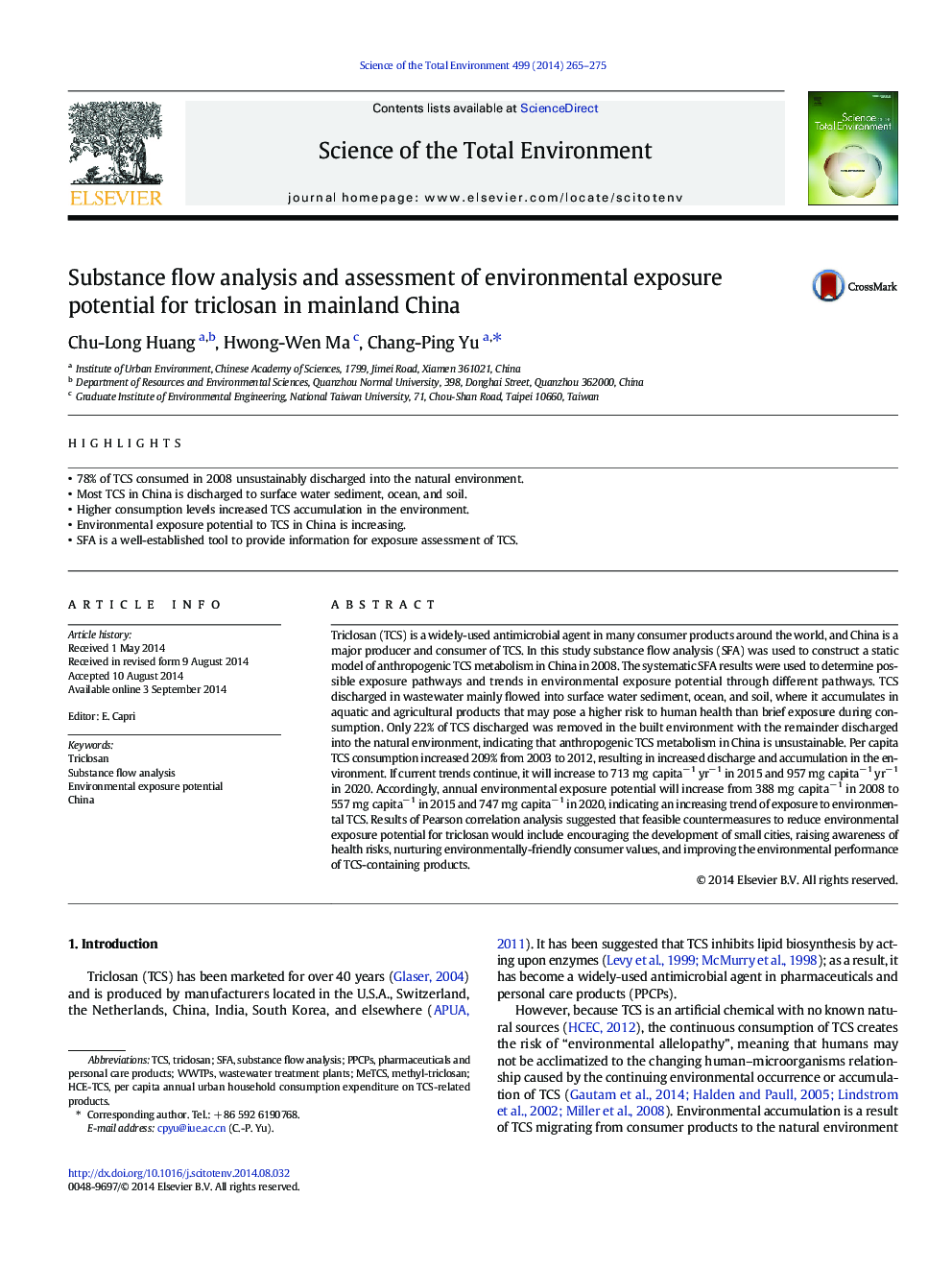| Article ID | Journal | Published Year | Pages | File Type |
|---|---|---|---|---|
| 6328910 | Science of The Total Environment | 2014 | 11 Pages |
Abstract
Triclosan (TCS) is a widely-used antimicrobial agent in many consumer products around the world, and China is a major producer and consumer of TCS. In this study substance flow analysis (SFA) was used to construct a static model of anthropogenic TCS metabolism in China in 2008. The systematic SFA results were used to determine possible exposure pathways and trends in environmental exposure potential through different pathways. TCS discharged in wastewater mainly flowed into surface water sediment, ocean, and soil, where it accumulates in aquatic and agricultural products that may pose a higher risk to human health than brief exposure during consumption. Only 22% of TCS discharged was removed in the built environment with the remainder discharged into the natural environment, indicating that anthropogenic TCS metabolism in China is unsustainable. Per capita TCS consumption increased 209% from 2003 to 2012, resulting in increased discharge and accumulation in the environment. If current trends continue, it will increase to 713 mg capitaâ 1 yrâ 1 in 2015 and 957 mg capitaâ 1 yrâ 1 in 2020. Accordingly, annual environmental exposure potential will increase from 388 mg capitaâ 1 in 2008 to 557 mg capitaâ 1 in 2015 and 747 mg capitaâ 1 in 2020, indicating an increasing trend of exposure to environmental TCS. Results of Pearson correlation analysis suggested that feasible countermeasures to reduce environmental exposure potential for triclosan would include encouraging the development of small cities, raising awareness of health risks, nurturing environmentally-friendly consumer values, and improving the environmental performance of TCS-containing products.
Keywords
Related Topics
Life Sciences
Environmental Science
Environmental Chemistry
Authors
Chu-Long Huang, Hwong-Wen Ma, Chang-Ping Yu,
